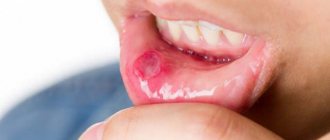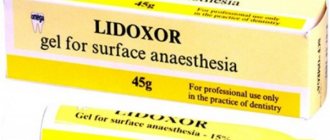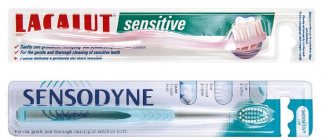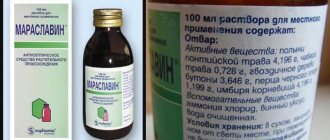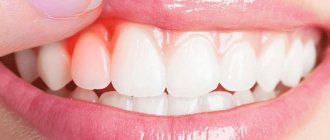- Instructions for medications
- Dialek
Scientific and Production Unitary Enterprise Dialek, Republic of Belarus INSTRUCTIONS (information for specialists) on the medical use of the drug
- Compound
- Pharmacotherapeutic group
- Pharmacological properties
- Indications for use
- Directions for use and dosage regimen
- Side effect
- Contraindications
- Overdose
- Precautionary measures
- Interaction with other drugs
A16.
OTHER REMEDIES FOR THE TREATMENT OF DISEASES OF THE DIGESTIVE TRACT AND METABOLIC DISORDERSHerbal remedies (a16ax) General characteristics : Transparent liquid of yellowish-brown color. During storage, sediment may form.
Compound
| Compound | For 30 ml: | For 50 ml: | |
| Chamomile flowers | 4.2 g | 7 g | |
| Marigold flowers | 2.1 g | 3.5 g | |
| Yarrow grass | 2.1 g | 3.5 g | |
| Ethyl alcohol 70% | sufficient quantity to obtain 30 ml of extract | sufficient amount to obtain 50 ml of extract | |
What are the side effects of Eroton?
Common side effects from using Eroton include:
- dizziness, headache, fog:
- heartburn, nausea, indigestion;
- abnormal vision (blurry vision, changes in color vision)
- runny nose and/or nasal congestion, nosebleeds;
- problems sleeping (insomnia);
- muscle pain, back pain.
If you experience any of the following conditions after taking Eroton, you should immediately seek medical help:
- pressing pain in the heart, which can radiate to the arm, shoulder, jaw;
- hard breath;
- changes in vision or sudden loss of vision;
- painful erection that lasts more than 4 hours (prolonged erection can damage the penis);
- ringing in the ears or sudden hearing loss;
- arrhythmia (pulse changes);
- swelling of the arms, ankles, or feet;
- convulsions;
- feeling like you might lose consciousness.
Directions for use and dosage regimen
In dentistry it is used topically.
Before use, 1 teaspoon of the medicine is diluted in a glass of warm boiled water. For stomatitis and other diseases of the oral mucosa, rinses (1-2 minutes) or applications of the drug (15-20 minutes) are prescribed 2-3 times a day for 2-5 days. When treating marginal periodontium, after removing tartar and curettage of periodontal and bone pockets, thin turundas with a drug solution are introduced into the pockets for 20 minutes. The procedure is carried out daily or every other day (4-6 times).
In gastroenterology, the drug is used orally and in the form of microenemas.
Use 1/2 cup of the drug solution internally at the rate of 1 teaspoon per glass of warm boiled water for 30-40 minutes. before meals or after 40-60 minutes. after meals 3-4 times a day.
For microenemas - 1 teaspoon of medicine per 50-100 ml of warm boiled water (after a cleansing enema) 1-2 times a day. The duration of the course of treatment is determined by the doctor individually, taking into account the characteristics of the disease, the achieved therapeutic effect and tolerability of the drug.
Composition and release form Vazotop R (28 tablets)
Vazotop R contains ramipril as an active ingredient and auxiliary components: hypromellose, pregelatinized starch, microcrystalline cellulose, powdered beef flavor, sodium stearyl fumarate, colloidal silicon anhydride and iron oxide. They are tablets for oral administration, oblong in shape with a groove in the middle. Tablets, depending on the amount of ramipril, have different colors: beige - 1.25 mg, yellow - 2.5 mg and pink - 5.0 mg, respectively. Each half of the tablet is marked with the amount of active substance on one side and the Latin letter “V” on the other. 28 tablets are packaged in plastic jars with a moisture-absorbing membrane and a rotating lid. Pack 3 cans in cardboard boxes.
Contraindications
- hypersensitivity to the components of the drug, as well as to plants of the aster family (Asteraceae), such as arnica, ragweed, tansy, wormwood, aster, chrysanthemum.
- period of pregnancy and lactation.
- children's age up to 12 years.
- peptic ulcer of the stomach and duodenum, diseases of the gallbladder and biliary tract, occlusion of the biliary tract.
- liver diseases, alcoholism, epilepsy, traumatic brain injury and other brain diseases with a decrease in the seizure threshold (when taken orally and in the form of microenemas).
Pharmacological properties
Vasotope R is an antihypertensive drug. Ramipril, which is part of the drug, is an angiotensin-converting enzyme (ACE) inhibitor, which, by suppressing the synthesis of angiotensin II, reduces its vasoconstrictor effect and stimulating effect on aldosterone secretion, and also inhibits the breakdown of bradykinin. Ramipril does not have a significant effect on renal blood flow (in some cases it increases it) and on the glomerular filtration rate. The drug does not cause the development of compensatory tachycardia. The maximum hypotensive effect develops 1 to 3 hours after taking the drug and continues throughout the day. With daily intake of Vasotope R, the decrease in blood pressure occurs gradually over 3 to 4 weeks and remains within the physiological norm throughout the entire treatment period. Abrupt withdrawal of the drug does not lead to a rapid increase in blood pressure. Vasotope P has a cardioprotective effect due to the inhibition of ACE in the myocardium and the accumulation of bradykinin, and also promotes the reverse development of myocardial hypertrophy in animals with arterial hypertension. After oral administration, ramipril is rapidly absorbed in an amount of at least 50–60% of the dose taken. The primary metabolism of ramipril occurs in the liver. In this case, a derivative of ramipril is formed - ramiprilat. Ramiprilat is approximately 6 times more potent in inhibiting ACE than ramipril. Plasma protein binding is 73% for ramipril, and 56% for ramiprilat. After a daily single dose of Vasotope R, a steady-state plasma concentration of ramiprilat is achieved by day 4. About 60% of the drug is excreted in the urine and about 40% in the feces (mainly in the form of metabolites). In case of impaired renal function, the excretion of ramipril and its metabolites slows down in proportion to the decrease in creatinine clearance. According to the degree of impact on the body of warm-blooded animals, Vasotope Rot is classified as a low-hazard substance.
Precautionary measures
- Contains at least 65% ethanol. A single dose of the drug (1 teaspoon) contains at least 3.25% ethyl alcohol. Due to the ethyl alcohol content, it is not recommended to take the medicine for a long time.
- If symptoms persist or worsen while taking the drug, you should consult a doctor.
- The drug is not recommended for use during pregnancy and lactation due to the lack of adequate data on the safety of the use of these herbal remedies and alcohol content.
The ability to influence the reaction rate when driving vehicles or other mechanisms
The medicine contains ethyl alcohol! During the treatment period, it is necessary to refrain from driving vehicles and engaging in other potentially hazardous activities that require increased concentration and speed of psychomotor reactions.
Irinotecan
Treatment with Irinotecan should be carried out in specialized chemotherapy departments under the supervision of a physician experienced in working with anticancer drugs.
In patients receiving irinotecan, a complete complete blood count should be performed weekly and liver function monitored.
Diarrhea that occurs as a consequence of the cytotoxic effect of the drug is usually noted no earlier than 24 hours after administration of irinotecan (in most patients, on average, after 5 days). When the first episode of loose stool occurs, it is necessary to prescribe plenty of fluids containing electrolytes and immediately carry out antidiarrheal therapy, including taking high doses of loperamide (4 mg initially and then 2 mg every 2 hours). This therapy is continued for at least 12 hours after the last episode of loose stool, but not more than 48 hours due to the possibility of developing small intestinal paresis. If diarrhea is assessed as severe (more than 6 episodes of loose stools per day or severe tenesmus), and if it is accompanied by vomiting or fever, the patient should be urgently hospitalized in the intensive care unit for comprehensive treatment, including the administration of broad-spectrum antibiotics. For moderate or mild diarrhea (less than 6 episodes of loose stools per day and moderate tenesmus), which does not stop within the first 48 hours, you should start taking broad-spectrum antibiotics orally. When diarrhea and severe neutropenia (white blood cell count less than 500/μl) occur simultaneously, broad-spectrum antibiotics are prescribed orally for prophylactic purposes in addition to antidiarrheal therapy.
During treatment with irinotecan, you should not take drugs based on St. John's wort (Hypericum perforatum), antiepileptic drugs (carbamazepine, phenobarbital and phenytoin), atazanavir and ketoconazole, which alter the clearance of irinotecan. Loperamide should not be administered prophylactically, including to patients who have had diarrhea during previous administrations of irinotecan.
The patient must be warned in advance about the possibility of developing delayed diarrhea. Patients should immediately inform their doctor if diarrhea occurs and begin appropriate treatment immediately.
With inadequate treatment of diarrhea, a life-threatening condition may develop, especially if diarrhea develops against the background of neutropenia.
Patients with febrile neutropenia (body temperature ≥ 38°C and neutrophil count ≤1000/μL) should be promptly started on broad-spectrum antibiotics in the hospital setting.
Acute cholinergic syndrome, which usually occurs during drug administration or in the first 24 hours after administration, is quickly and effectively relieved by subcutaneous administration of 0.25 mg of atropine (use caution in patients with bronchial asthma).
The dosage form of the drug contains sorbitol as an excipient, and therefore Irinotecan cannot be used in patients with hereditary fructose intolerance.
During treatment with irinotecan and for at least three months after discontinuation of therapy, reliable contraceptive measures should be used.
If Irinotecan gets on the skin or mucous membranes, the skin should be immediately washed with soap and water, and the mucous membranes should be washed with just water.
Interaction with other drugs
The simultaneous use of other medications containing ethyl alcohol should be avoided.
Interactions associated with the presence of ethyl alcohol in the composition:
- drugs that cause a disulfiram-like reaction (feeling of heat, redness of the skin, vomiting, tachycardia) when taken together with alcohol: disulfiram, cefamandole, cefoperazone, latamoxef, chloramphenicol, chlorpropamide, glibenclamide, glipizide, tolbutamide and other hypoglycemic drugs, griseofulvin, metronidazole, ornidazole, tinidazole, ketoconazole, procarbazine.
- drugs that inhibit the functions of the central nervous system.
Conditions and shelf life
Store in a place protected from light at a temperature not exceeding 25 °C.
Keep out of the reach of children.
Shelf life: 3 years. Do not use after the expiration date stated on the packaging.
in bottles of 50 ml in package No. 1; in bottles of 30 ml in package No. 1
Guest, you can leave your comment:
What should you not do while taking Eroton?
When taking Eroton, it is worth remembering that you should not take it simultaneously with alcoholic beverages, as this increases the incidence of side effects, which can be extremely dangerous for your health.
Also, when taking Eroton, you should avoid eating grapefruits and grapefruit juice, since this fruit significantly enhances the pharmacological effect of Eroton, which can lead to complicated side effects and even an overdose.
If you are taking Eroton, you should not use other concomitant medications to treat impotence without first consulting your doctor. This can only do more harm than produce the expected, effective result.
Side effect
If side effects occur, tell your doctor. This applies to all possible side effects, including those not described in this leaflet.
Allergic reactions are possible (skin itching, skin rash, eczema, contact dermatitis), anaphylactic reactions, skin pigmentation.
With prolonged use, it can cause a feeling of bitterness in the mouth, in some cases - a photosensitizing effect (increased sensitivity of the skin to sunlight).
Consequences of an overdose of Eroton
In case of an overdose of Eroton, various symptoms characteristic of this drug, associated with its mechanism of action, may be observed. As a result of such an overdose, the following consequences may occur:
- collapse (acute disruption of the blood supply to vital organs);
- deafness;
- retinal damage or blindness;
- damage to the penis due to prolonged erection;
- heart attack (myocardial infarction).
This is why it is very important to always consult a healthcare professional before taking Eroton. You must always follow all doctor's instructions and read the instructions for the drug.
